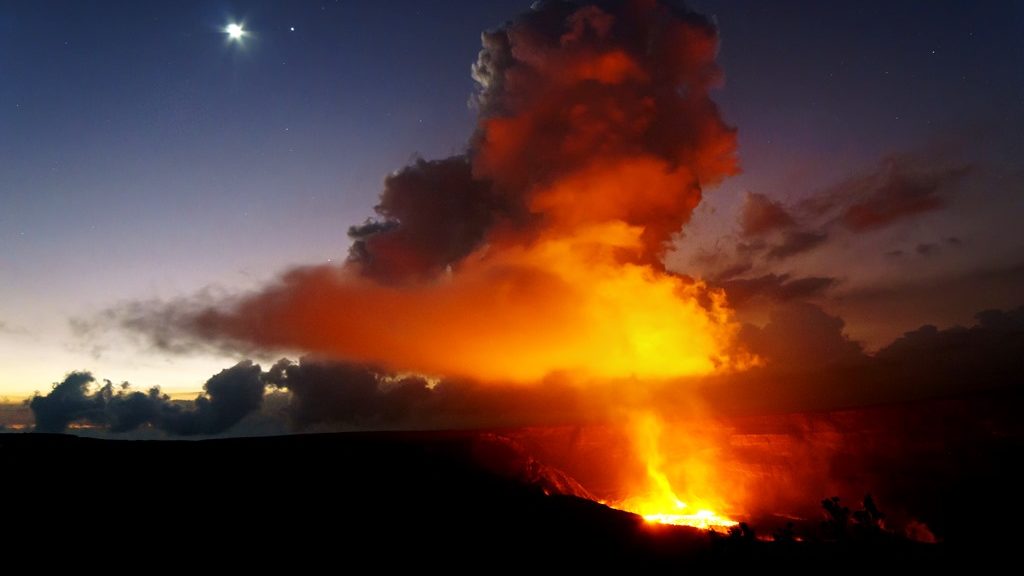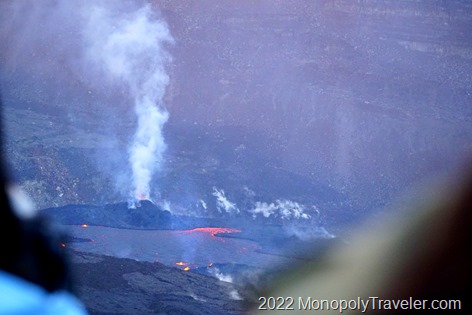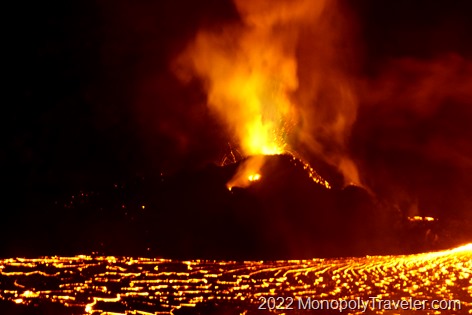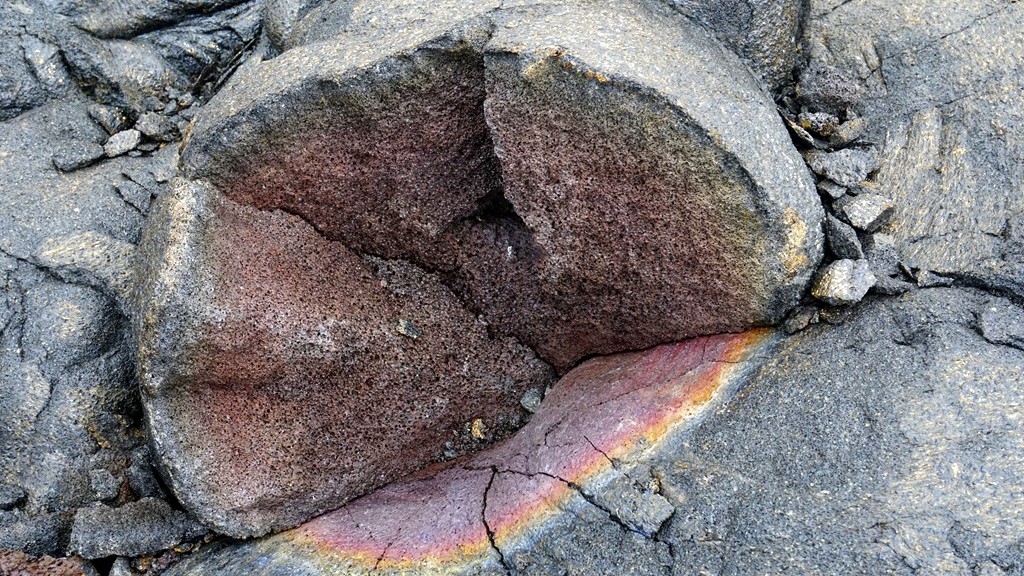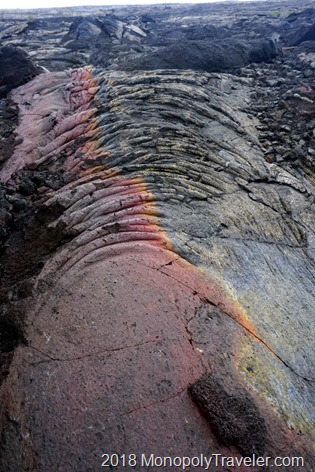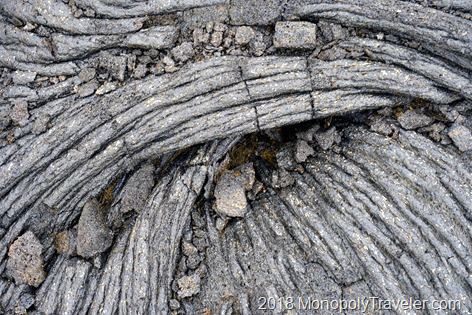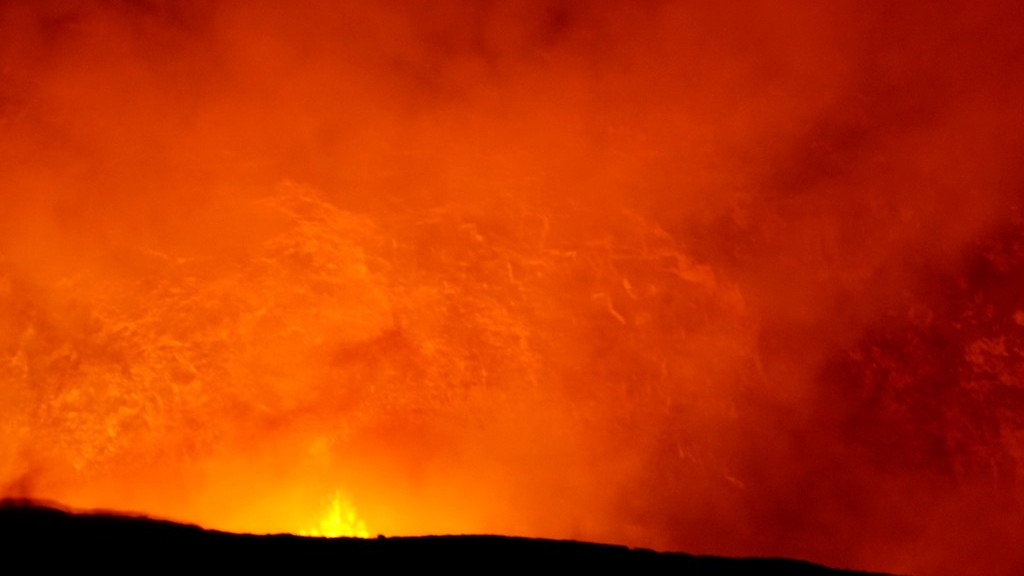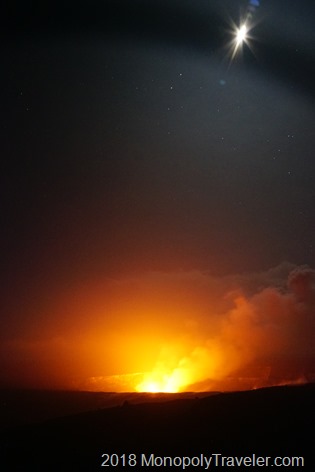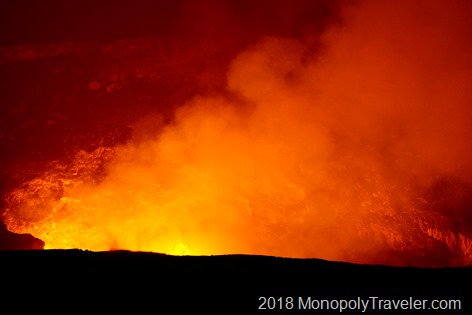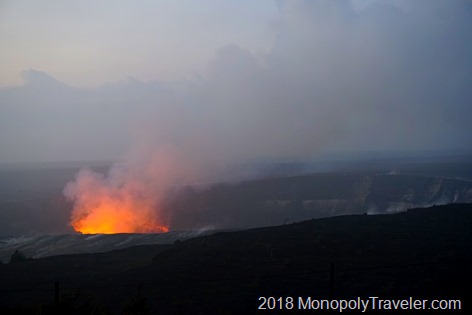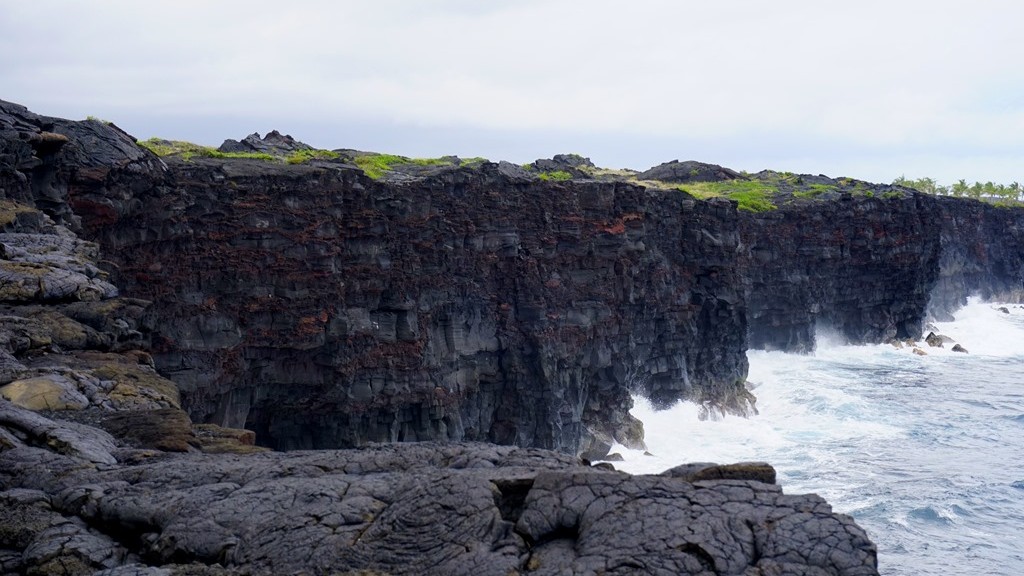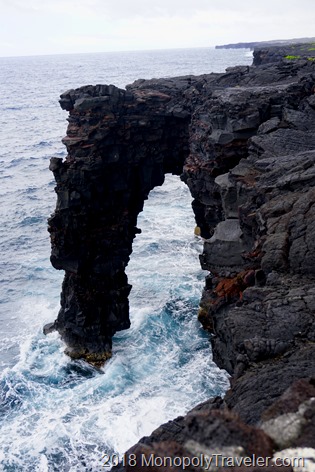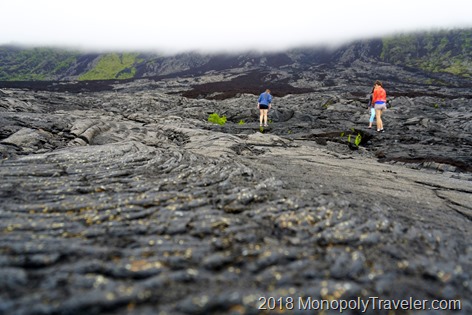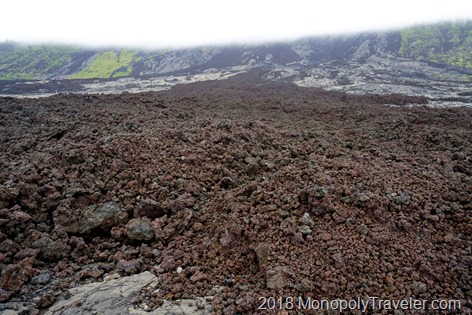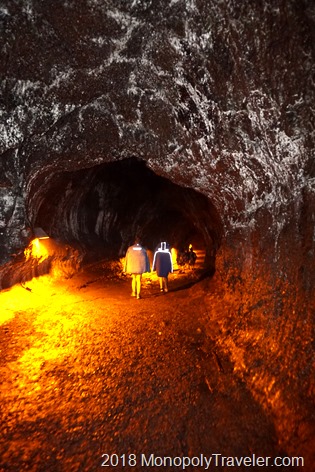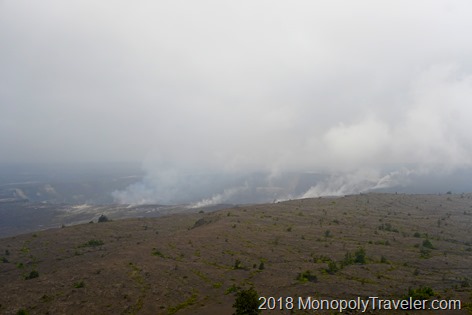While celebrating the New Year on the Big Island, one of the few things on our wish list was go back to Hawaii Volcanoes National Park. On our last visit to this amazing park, it was just hours before a portion of the volcano wall collapsed causing a plume of smoke and ash to billow into the air. After that it began erupting in other places causing lots of destruction in its path and changing the volcano and island. This would be an amazing opportunity to see how much the volcano had changed during that time. During our first few nights on the island, the Hawaii Volcanoes National Park website warned that the eruption had paused. Since this was one of our intended things to do while here, we were disappointed and wondering if we would be able to see lava actively flowing. Our schedule remained flexible so we could adjust things around in the event lave began to flow once more. Just before going to bed halfway through our trip I checked the website. Lava had begun flowing once again earlier that day. Tomorrow we’ll drive across the island and explore an active volcano.
About mid morning we climbed into our vehicle for the almost 2 hour drive from Kona to the National Park. Our goal was to be there at sunset to see the orange glow from lava filling into caldera so we started a little later in the morning. Once at Hawaii Volcanoes National Park we stopped at the visitors center, then drove to the overlook of the volcano. It was amazing to see how much larger the caldera had become since visiting 4 years earlier. Smoke was rising up this area but we couldn’t see any lava. It was a little disappointing to not be able to see any orange liquid oozing out from below the rock but it’s still an impressive view. I noticed what appeared to be people across the caldera walking to a different viewing area. Expecting it to be a relatively long hike and some people in our group being unable to walk that distance, I dismissed the thought of finding where the trailhead was for that. After examining the new caldera and signs showing the differences since this last eruption, we returned to the visitor’s center. I listened in to a Ranger talk about where to see the lava and what it takes to do so. He recommended returning very early in the morning when there are very few people at this viewing area they opened just weeks before. That wasn’t really an option for us since it’s such a long distance to drive so on to the next best option – joining hundreds of other people to witness sunset at the newly created viewing area.
A portion of our group opted for hiking the few miles to this overlook where you could actually see lava spewing from below the surface. In order to get a parking spot, we were advised to arrive in the area a couple of hours ahead of sunset. Once parked we spent a little time getting ready and those of us going to the viewing area began our hike. As it turned out, the hike was pretty easy as it was mostly using a paved road no longer in service. A short time later we were at the over look with daylight still presiding over the volcano and there it was. The orange glow of lava erupting. It was a surreal experience for me – very humbling to see with my own eyes. There were hundreds of other people also there so park rangers were trying to keep people rotating to the front for everyone to get a chance to see this natural wonder and it’s power to create the land we walk on. I spent some time photographing this awesome natural power, now understanding more why some many people are drawn to it. Respect is required of such a powerful force and has been shown through the centuries as so many have seen its destructive abilities allowing new life to emerge for many 100’s of years after. Eventually darkness fell over the volcano and the familiar orange glow was a vibrant, sole light source of the volcano. Watching the lava ebb and flow was so mesmerizing. Something I will remember for a very long time. With people waiting back at our vehicle, and a 2 hour drive ahead of us, it was time to depart this viewing area with memories and photographs. It was an incredible experience!

